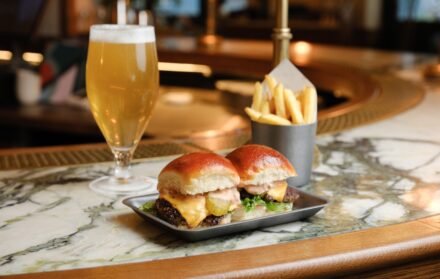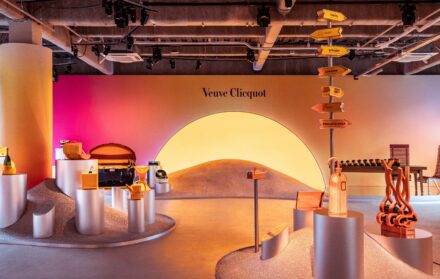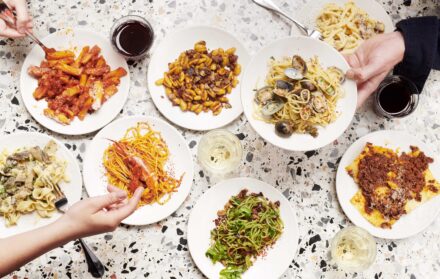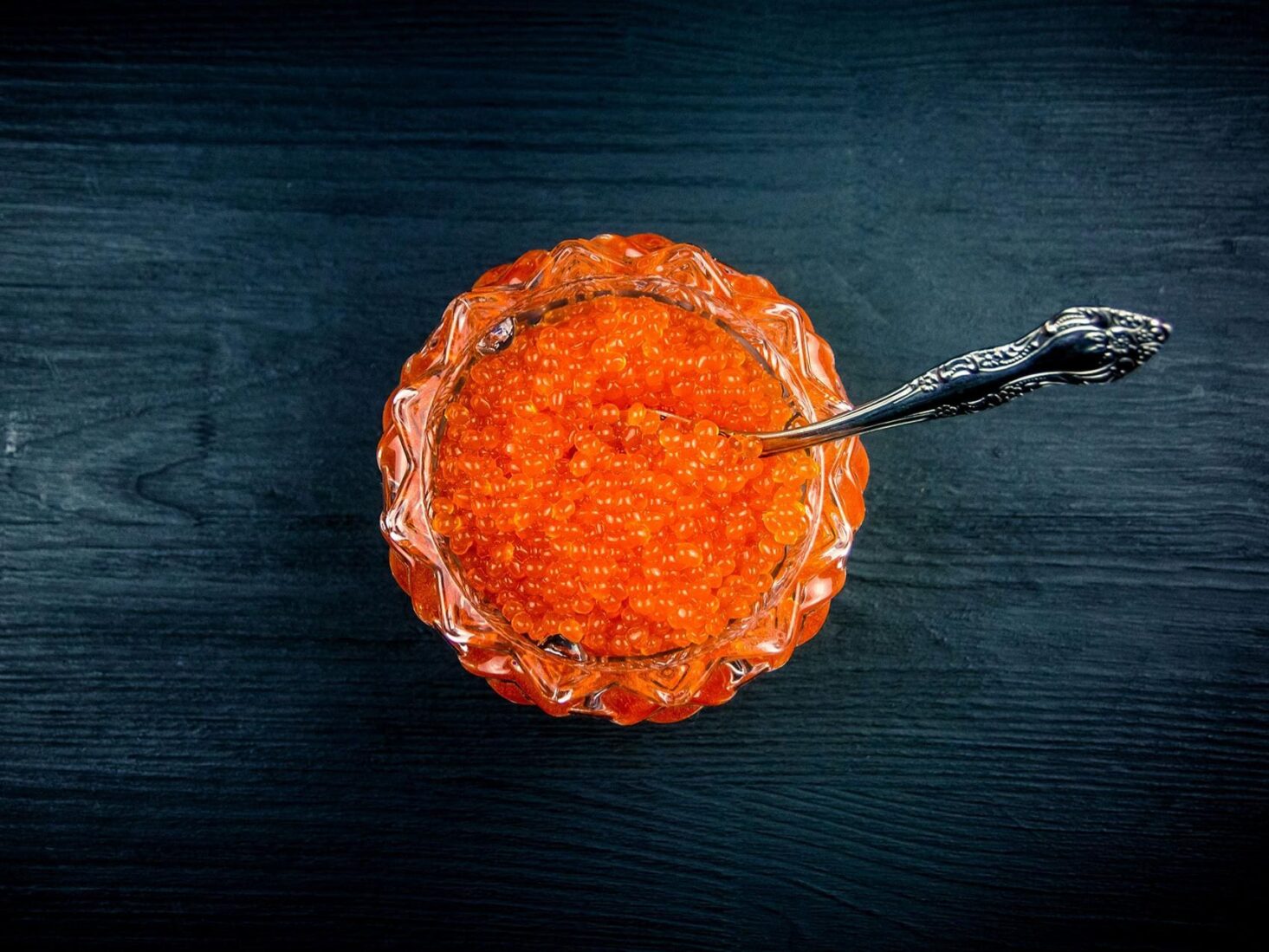
The beginner’s guide to caviar
Can’t tell your Osetra from your Sevruga? Here’s everything you need to know about one of the world’s most decadent delicacies
The cruellest thing about caviar is the pangs of gluttony it induces. Unless you possess a bank balance the size of the Sultan of Brunei’s, cravings for caviar can never, ever be sated.
Because you can never have too much caviar. The late (and, presumably, astonishingly well renumerated) food writer AA Gill once claimed he liked his caviar poured on top of a baked potato so thickly that you had to play ‘hunt the potato’. This level of abundance is beyond the means of anyone without a Coutts bank card and a choice of personal yachts. But that doesn’t mean you can’t afford to ever buy any for yourself.
For the price of a two-person dinner at Pizza Express you can buy enough caviar for a decadent snack, or stretched to a full supper if you also supply blinis, crème fraiche and some fizz. And if anyone accuses you of fin de siècle excess? Respond in the words of the mighty Patricia Highsmith, who attributed this line to Therese, one of literature’s ultimate dark horses, in her novel The Price Of Salt: ”It’s an acquired taste. Acquired tastes are always more pleasant – and hard to get rid of.”
Of course, if you’re a self-proclaimed roe virgin, how do you make sure you’re getting the best money can buy? Here’s everything you need to know about buying, storing and, most importantly, dining on caviar.
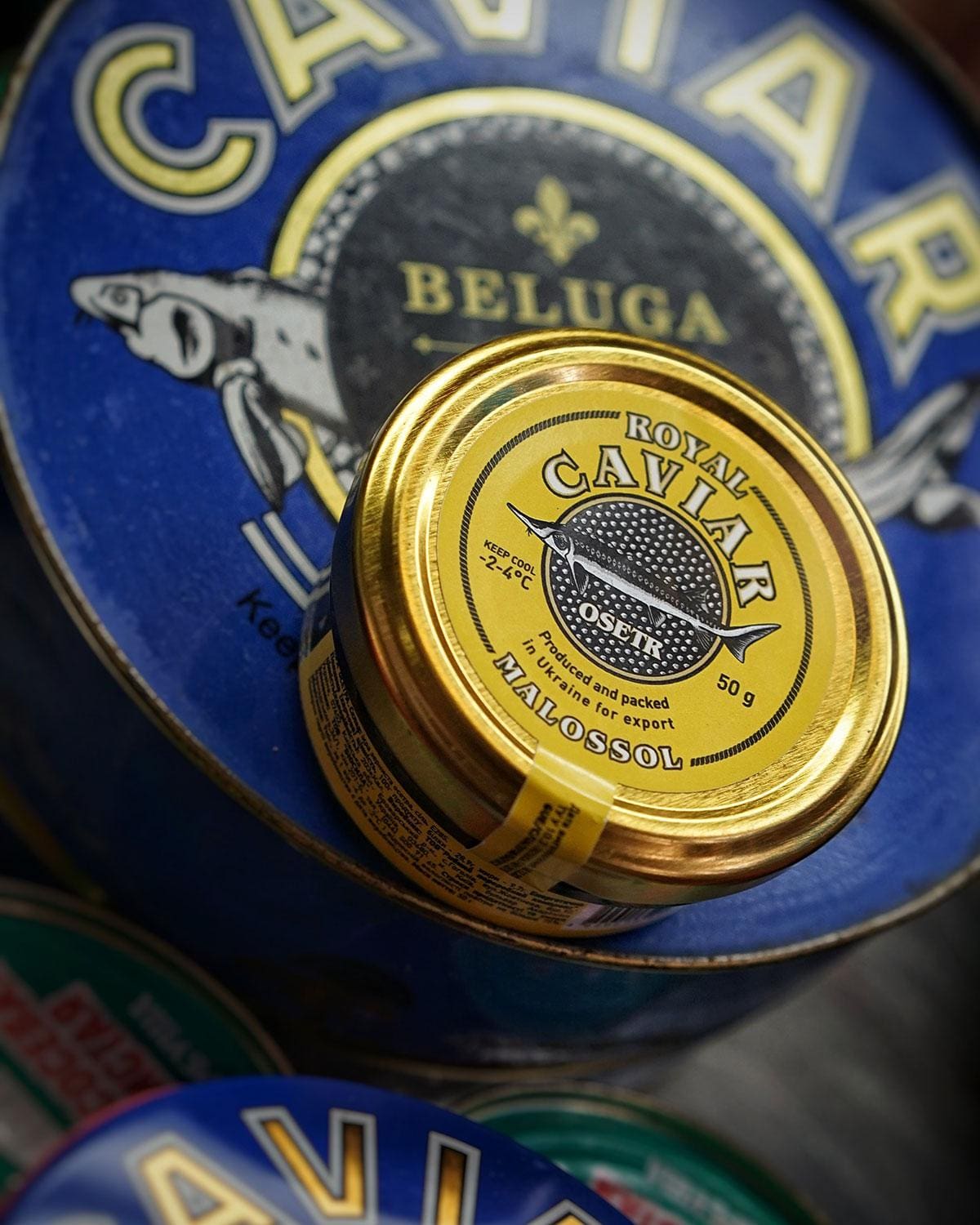
Where to buy caviar
Most people get their first sighting of caviar, or at least the tins in which it’s kept, on a trip to the Harrod’s food hall. As you might suspect, however, this is far from the best place to get maximum bang for your buck. If you’re based in the UK, the best place to buy caviar at a price that’s reasonable and that promises a trust factor in progeny is through some of the extremely reputable online caviar houses.
Wild caviar is completely illegal in the UK so be absolutely sure that you’re buying from farmed stock. For reassurance that your caviar has been ethically sourced, Imperial Caviar impresses with its commitment to marine welfare, only sourcing its caviar from sturgeon reared in environments as close to their natural habitat as possible.
Fine Food Specialist is also very reputable and has an interesting array of very good value caviar alternatives, such as black lumpfish roe and salmon caviar, the latter of which you can get for just £13.95 for 100 grams. Wild Salmon Keta Caviar from Alaska is another very good value choice, available to buy from Caviar Classic London from £16.50 for 2 x 50g jars.
What type of caviar to buy
Russian caviar is the Lennon and McCartney of roe; an unassailable high point that cannot ever be truly matched. If you’re prepared to splurge, then Osetra, Royal Beluga, Shassetra and Sevruga are the names you should be looking for. Siberian sturgeon roe, which you may see written as Acipenser baerii, are smaller eggs that have a stronger, oyster-like redolence of the sea. Because of this stronger flavour, it’s almost always cheaper than its caviar rivals and is a decent option for a first premium caviar experience that won’t bankrupt you. At least, not completely.
Amur sturgeon are renowned for their large eggs which are about as sweet in taste as caviar gets. The ‘pop’ of the egg bursting on your tongue is more pronounced with amur than any other caviar and the colours are gorgeous too, ranging from khaki green to pale white. This is the most sensual caviar around and nowhere near the most expensive.
Huckleback caviar, also sometimes called shovelnose, is most widely seen in the States and, appropriately for a nation renowned for large appetites, is reasonably priced and thus can be eaten in much larger portions. It’s nowhere near as delicate as some of the traditional varietals but it makes a good first-time caviar purchase. Just buy in the knowledge that, acceptable as it is, this is nearer the bottom of the caviar flavour pyramid when it comes to depth of taste.
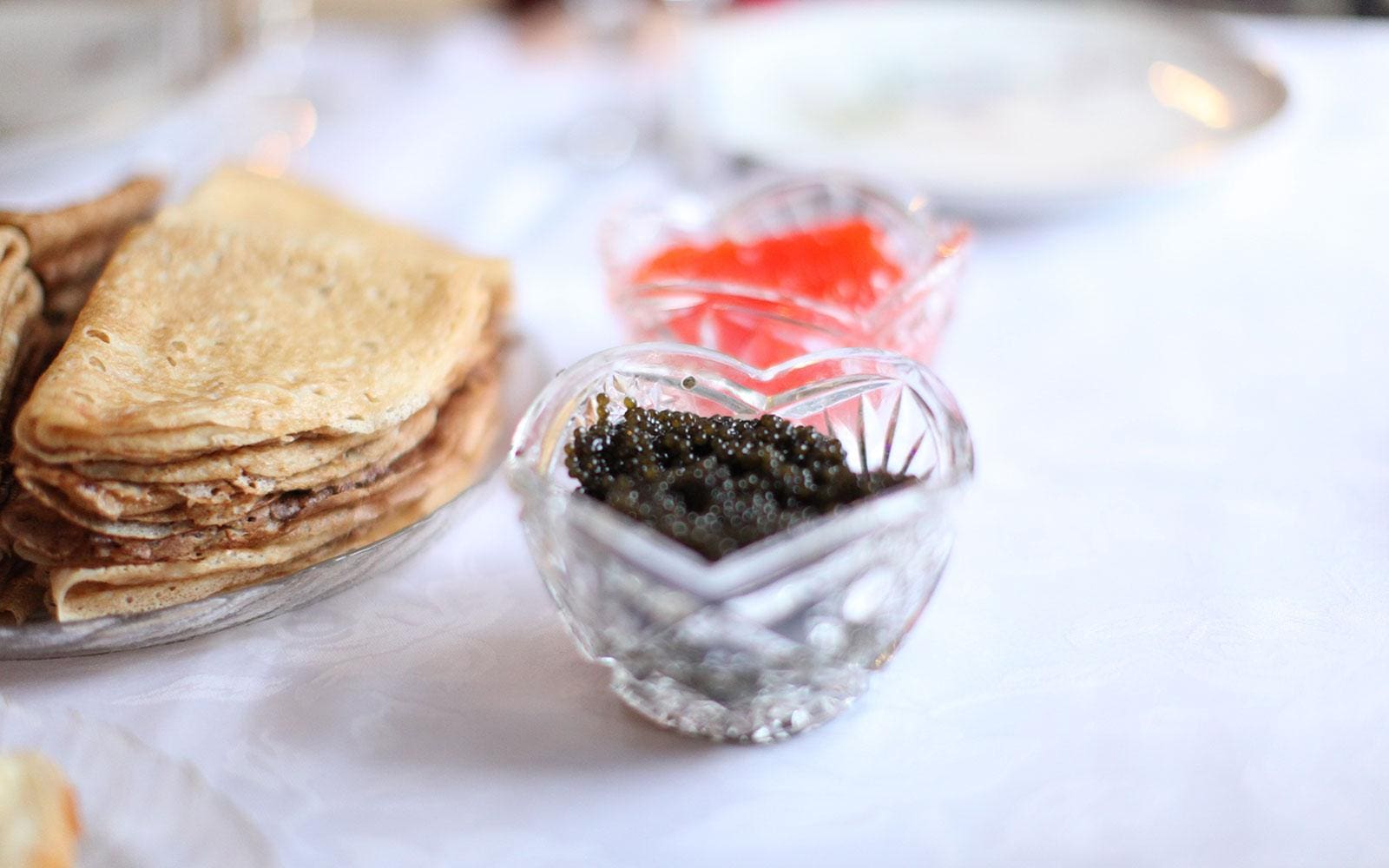
Osetra eggs, meanwhile, are prized for their mild flavour (generally, the lighter the flavour, the more expensive the caviar will be) and the colouring can be brown or dark green. The perfect osetra caviar will have a taste that sits on the knife edge between briny and buttery.
Regardless of what purists say, however, it’s far from imperative that your caviar be Russian, or even come from the sturgeon fish at all. If you’d rather spend less and, frankly, have much, much more caviar at your disposal, then the myriad alternatives, such as lumpfish, arenkha and kaluga, are widely available from online caviar retailers and make for just as memorable an indulgence.
How not to get ripped off
Caviar has an almost unique power to intimidate and, more than any other food item, is susceptible to the worst excesses of ignorant food snobbery. Everybody knows that the most expensive champagne on the menu isn’t likely to be the most pleasant, enjoyable or lovingly made. Yet with caviar, the knuckle dragging correlation between price and quality seems to never be challenged.
So start challenging it. Why is it incongruous to shop around for caviar any less astutely than you shop around for the best prices on bread, milk or a second hand car? The culture surrounding caviar suggests that ‘if you can afford it, you don’t need to look at the price’. By this logic, there would be no wealthy people left on the planet as they would have all spent £40m on a kettle by now.
More technically, to know you’re getting the best caviar look out for the descriptor ‘malossol’. You’ll find this word on the labels of better quality caviars and it means the eggs have been soaked in brine and then strained, rather than bundled into the tin with a lot of salt, which can turn caviar mushy. You’ll pay more for malossol caviar but it’s worth it.
Finally, if it sounds too good to be true price-wise then it probably is. As a rough guide, if you find a 50g tin of Royal Beluga caviar going for less than £140 then it’s either not Beluga caviar, or someone in the procuring process is breaking the law.
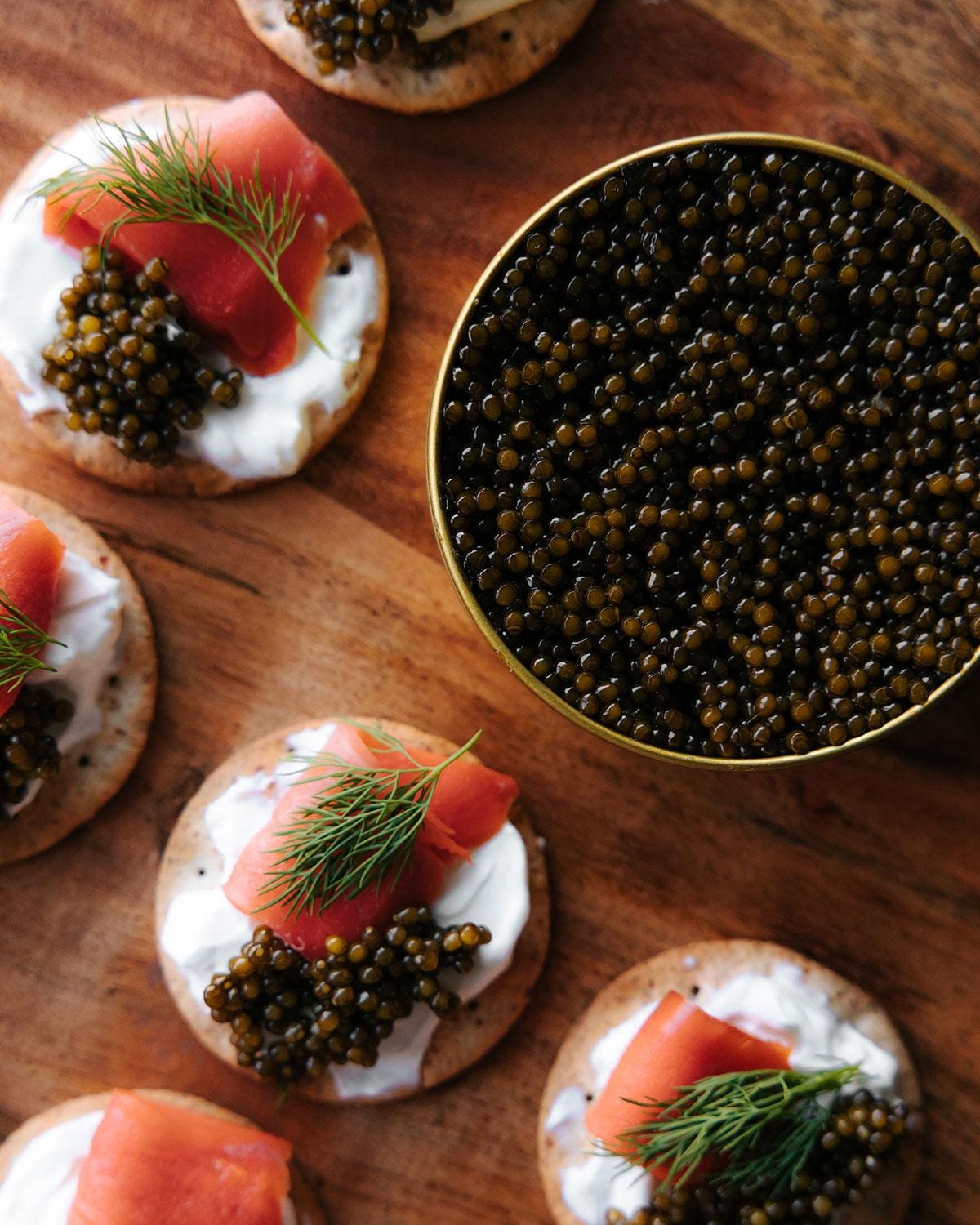
How to store caviar
Keeping your caviar at normal fridge temperature is absolutely fine but ice, ice and more ice is the key to extracting the true unctuous, rasping yet silky explosion of flavour when you finally get it out and serve it.
Simply plonk the tin onto an ice try and your work is done for the evening – but when that tin is opened, you need to eat it straight away. Those eggs should sparkle when you look at them and pop in your mouth. If you’re restrained enough to be tempted to leave some of your caviar for another night, the contents of an open tin can very quickly turn into a sticky, oily, murky looking gloop.
If there’s two of you and you want a good few mouthfuls each, start with a 50g tin and pair with champagne or vodka over a couple of hours. You’re worth it.
How to eat caviar
It might seem like there’s never been a better time to get your best silver out but that would be a sizeable mistake. Caviar is a delicate product and the metallic taste of the standard teaspoon can actually transfer to the eggs altering their flavour.
So what’s the alternative? Donald Trump’s Mar-a-Lago resort in Florida was slammed a couple of years ago for serving its caviar to guests with a plastic spoon. If you’re in a restaurant that knows what it’s doing then it should be serving caviar on mother-of-pearl spoons. At home, however, you genuinely shouldn’t be afraid to simply use (reusable) plastic spoons or, for the true cognoscenti, simply place a small dollop on the back of your hand. This is exactly what chefs do at wholesale markets to sample the goods before they buy the industrial amounts needed for their kitchens.
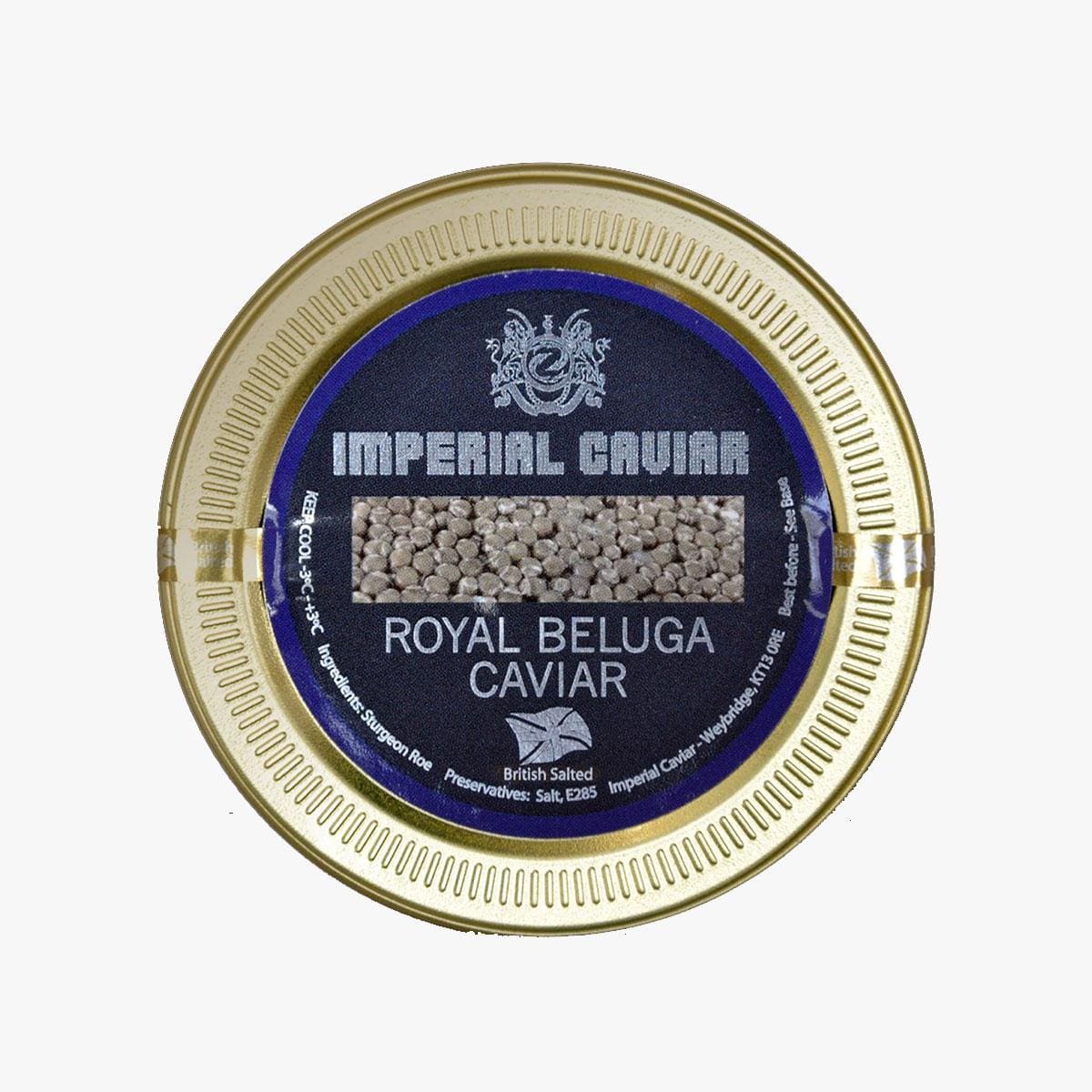 |  | 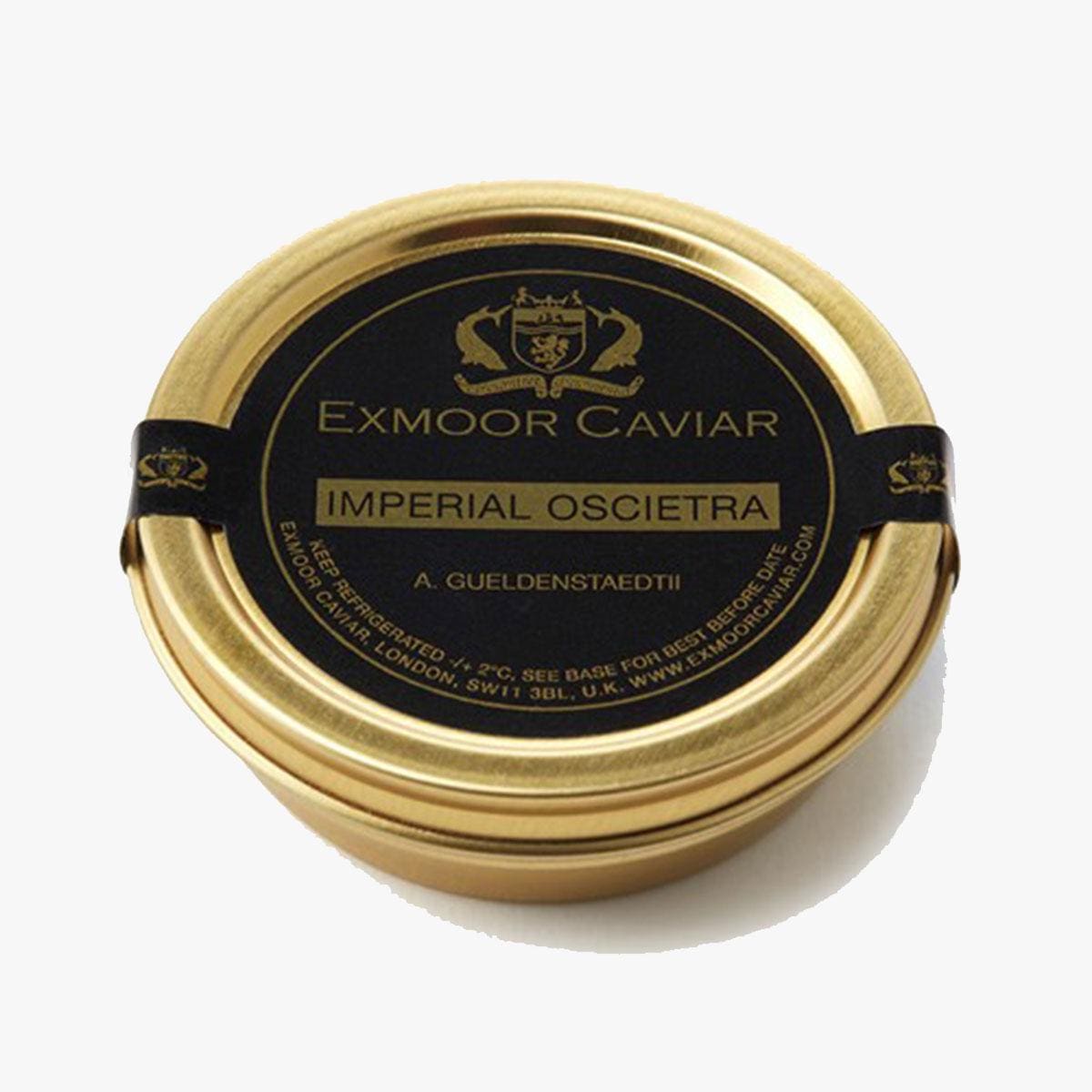 |
What to eat with caviar
A neutral taste is absolutely key. Caviar is so fatty and rich that it absolutely must be allowed to sing with the bare minimum of rival flavours. Blinis are a popular choice because they’re bland, soft and enhance the sonorous velvety-ness of the main event.
A little crème fraiche on the blini as a resting pad for the roe is also a good idea; the subtle malleability of the dairy should embolden the caviar taste even further. Many talk of using parsley, chives and even boiled egg as extra accompaniments. Trust us, you really don’t need any of it.
What to drink with caviar
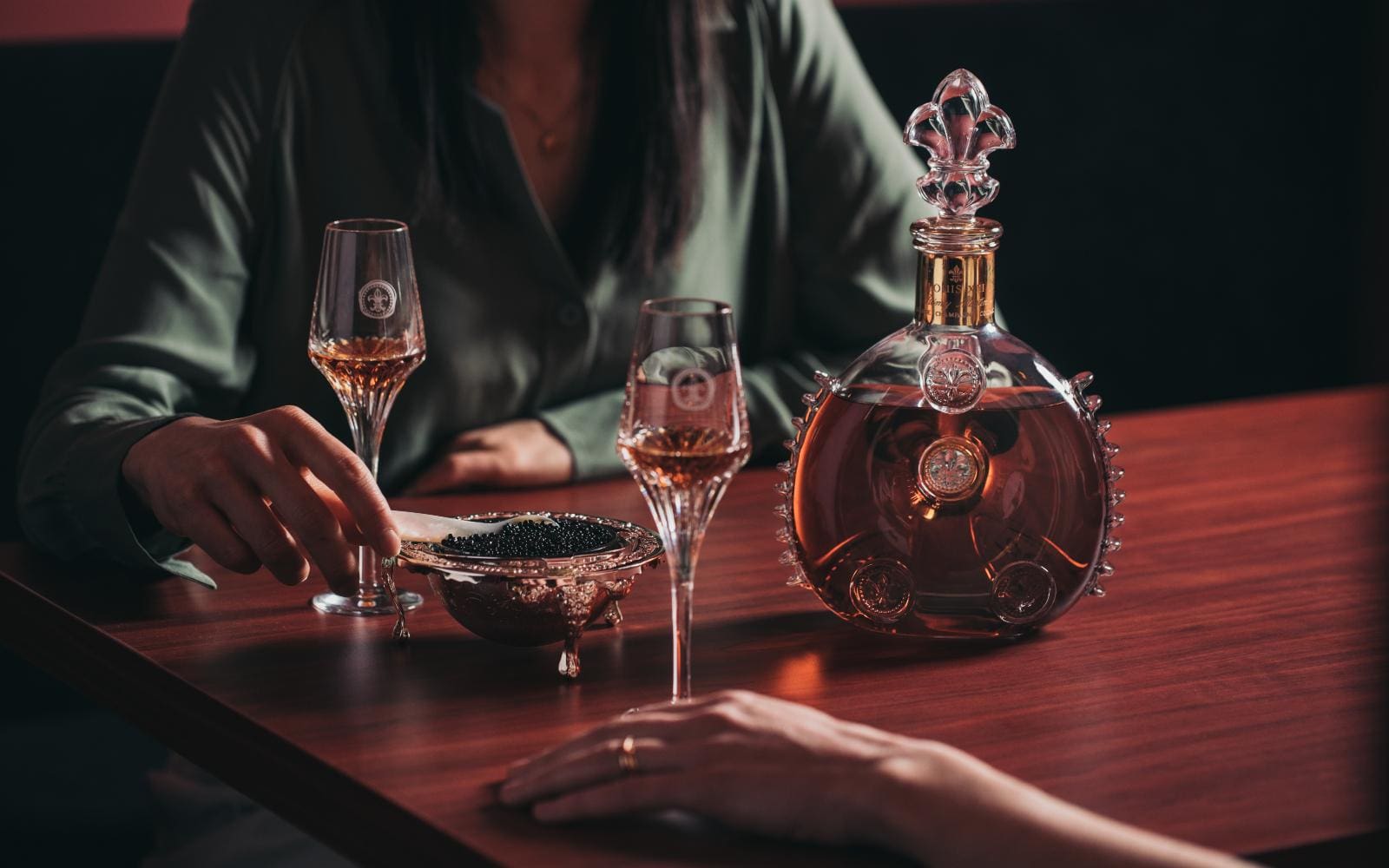
If you’re indulging in one of the world’s most aristocratic food stuffs, it stands to reason that you’ll invest in something suitably premium to pair it with. Spirits don’t come much more prestigious than Louis XIII, the hallowed cognac from Rémy Martin. As well as a classic decanter of Louis XIII cognac, the brand’s Caviar Gift Set contains a fleur de lys-engraved Christofle silver-plated serving set and five nacre caviar spoons.
We asked Louis XIII for their top caviar-and-cognac tasting tips. Here’s what they said:
- It is important to maintain the cold chain in order to conserve the crunch and freshness of the caviar.
- Always avoid handling the caviar excessively so that it does not become oily.
- Try to encase the caviar tin in a carved or otherwise enhanced block of ice so that it stays very cold.
- Avoid accompaniments such as capers, gherkins and egg whites that are traditionally included in caviar tasting sessions, as these could spoil the delicate balance between the caviar and LOUIS XIII.
- Use neutral mother-of-pearl spoons, since silver spoons can leave a metallic taste.
- To enjoy the very best tasting experience, place the caviar on the tongue and allow it to burst against the palate.
- Always present caviar on a bed of ice in a caviar server to preserve the quality and firmness of the eggs.
- Opt for Caviar Beluga Impérial by Pétrossian or Caviar Sturia Grand Chef by Sturia to pair with Louis XIII.
Read more: The best Scotch whiskies and the distilleries that produce them





